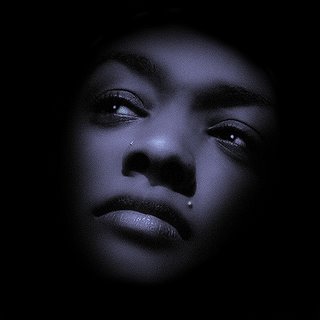Racial Identity and the Power of Self-Definition
“We’ve always had to live two lives – one for them and one for ourselves”
In Dr. Patricia Hill Collin’s Black Feminist Thought, Dr. Collins addresses the idea of racial identity as it pertains to African American women. From her readings I have learned that because Black women have such a strong connection between themselves and their community, it is often hard for Black women to separate “womanhood” from “blackness”. Rather, through helping their own cause Black female activists seek to uplift the entire race.
Collins discusses this connection between community and self in her explanation of the Black women’s organizations which were predominately made up of middle class African American women. These organizations “…while working on the behalf of all Black women…did not work with them as equals;” this class divide between middle and working class African American women as Collins explains, lead working class and poor Black women to take up membership in other venues that “required less affluent lifestyles and less active public roles and had more practical benefits for their members than did predominately middle-class reform organizations.” Collins goes on to add that regardless of their class, these women saw the need to give back to the community. The assumption Collins appears to be making about middle class Black women is that although they do not see poor and working class black women as being “refined” enough to share organizations, they still face the same challenges regardless of class, because of their race and gender.
This diversity of responses to common challenges is something Collins describes in the chapter “Distinguishing features of Black Feminist Thought.”
In the chapter entitled, “The Power of Self-Definition;” Collins discusses the reasons she views self definition as an essential piece of Black feminism. One of the reasons she highlighted as essential was the need to hide a self-defined standpoint in the eye of the dominant group which basically means that Black women are able to use their silence powerfully. In saying this Collins urges readers not to interpret Black women’s silence as a sign of submission and suggests Black women’s individual acts of resistance are a sign of this powerful silence. Another one of the reasons she highlighted as essential was that by insisting on self definition, Black women not only question what has been said about them but also are able to question the credibility and intentions of those possessing the power to define them. This ability to not only define themselves but also to question those who control how they are defined by others is a key component in combating controlling images because as Collins states these “controlling images applied to Black women are so uniformly negative [that] they necessitate resistance.”
Collins’ discussion of the “power of self definition” is entirely relevant to understanding the way in which middle class African American women define themselves in the 21st century because middle class African American women do face many of the same sexist and racist issues as poor and working class Black women simply because they are still Black women. Facing these same issues includes the facing and combating of controlling images which, as Collins describes, can spark the creativity of some Black women. This creativity can be used in literature or other art forms to self-identify and combat negative images.
In the chapter “The Sexual Politics of Black Womanhood” Dr. Collins discusses issues of sexuality as they pertain to African American women. One of the things Collins argues is that one view of sexuality is as an important social location joining together other forms of oppression. Through saying this she is saying that sexuality is the “glue” holding together other forms of oppression. Therefore this is another one of her arguments that is extremely relevant to understanding the sexuality of middle class African American women because sexual oppression and objectification lumps all Black women together regardless of class status and lifestyle. Especially in instances where controlling images, as described above, are sexual in nature. An example of such controlling images used to sexually oppress Africana women is Pornography which, Collins describes, “…as animals, Black women receive no such redeeming dose of culture and remain open to the type of exploitation visited on nature overall. Black women’s portrayal in pornography as caged, chained, and naked creatures who possess “panther like”, savage and exotic sexual qualities reinforces the theme of Black women’s “wildness” as symbolic of an unbridled female sexuality.” Instances such as these are all the more reason for Black women to use their power of self-definition in attempts to combat these images.
The author’s use of the film Daughters of the Dust as a portal into understanding the concept of Black feminist thought is highly appropriate as the film illustrates a group of women who have diverse reactions as they face the same challenges as they prepare to migrate North from their Sea Island town. The film shows how over time, as Collins suggests Black feminism is dynamic and changing, these women had to create new methods for dealing with the challenges they faced. These new coping methods are apparent when looking at different generations of women within this family unit. Also, another concurrent theme Collins brings up that is present in the film is Africana women’s roles in carrying and uplifting society and these women’s roles in building and maintaining community.

